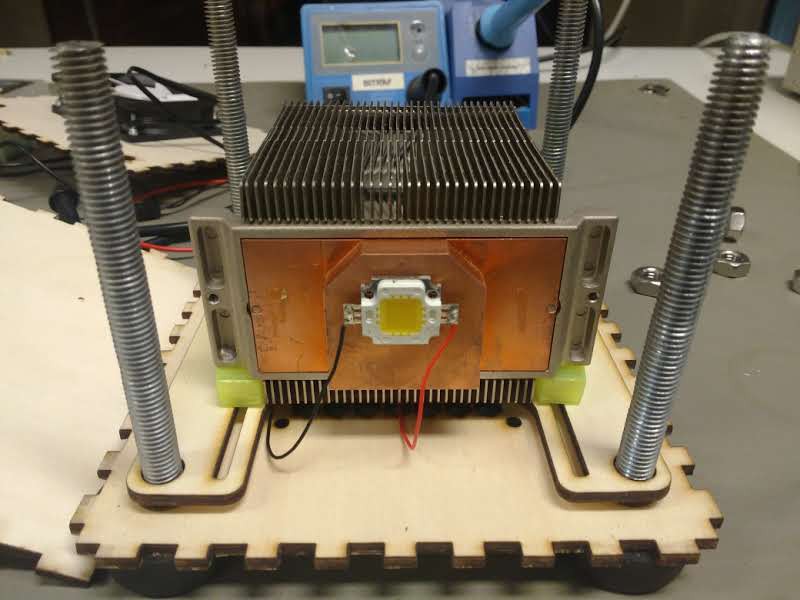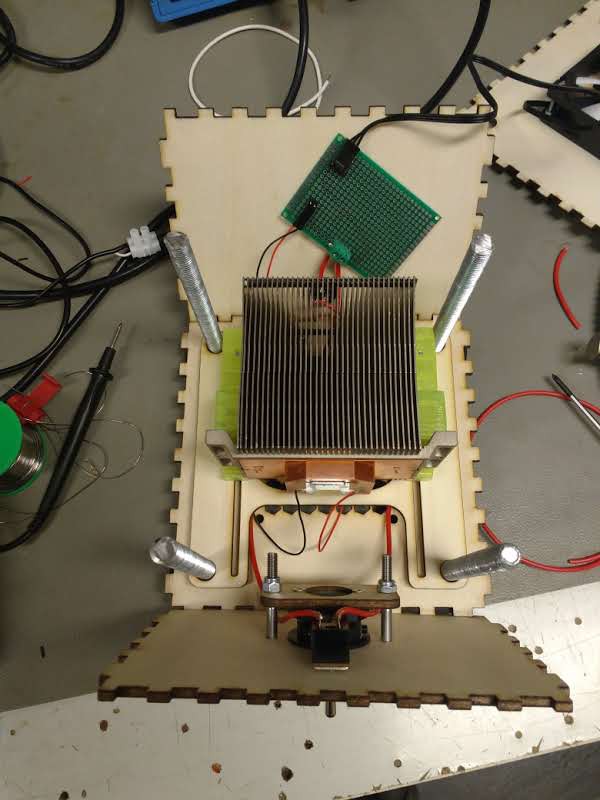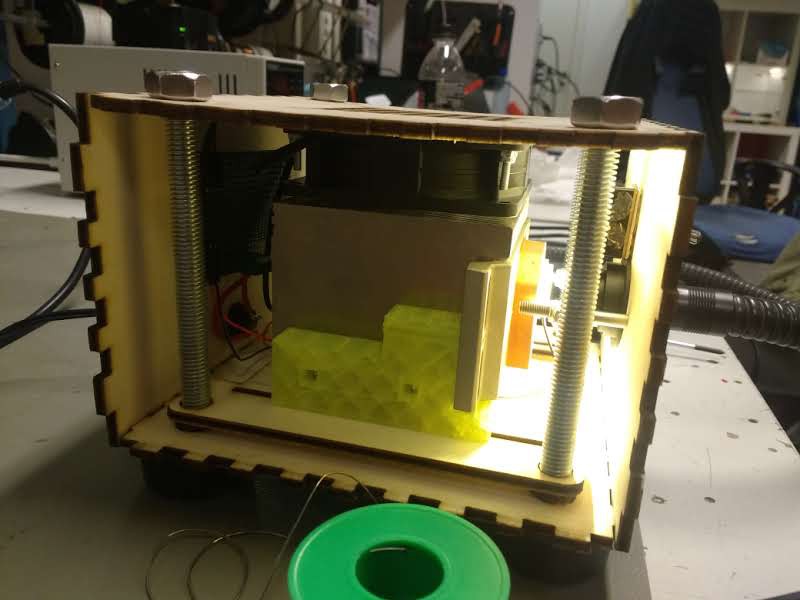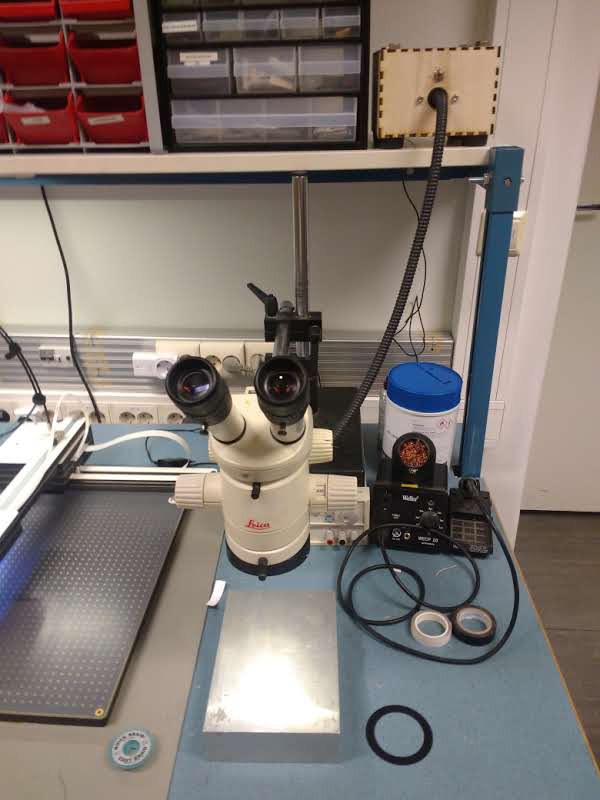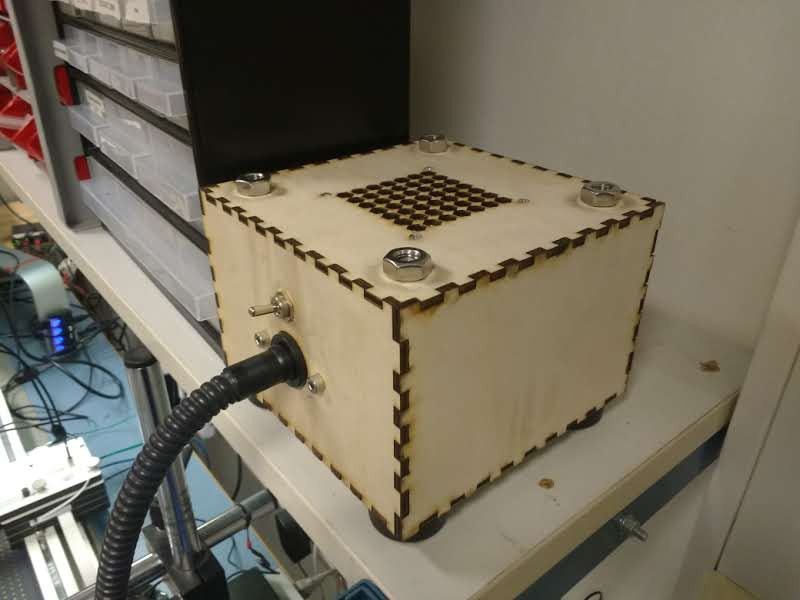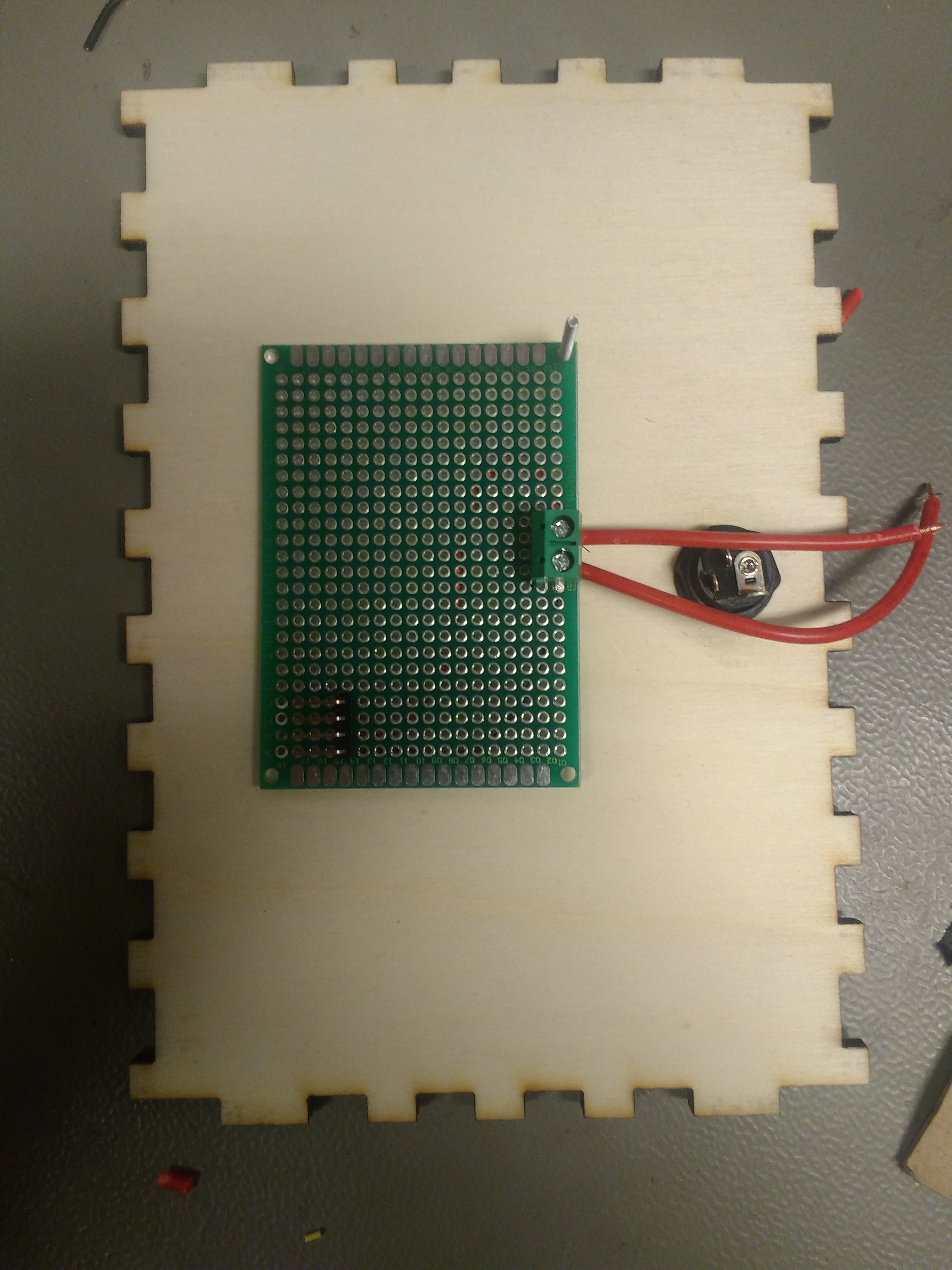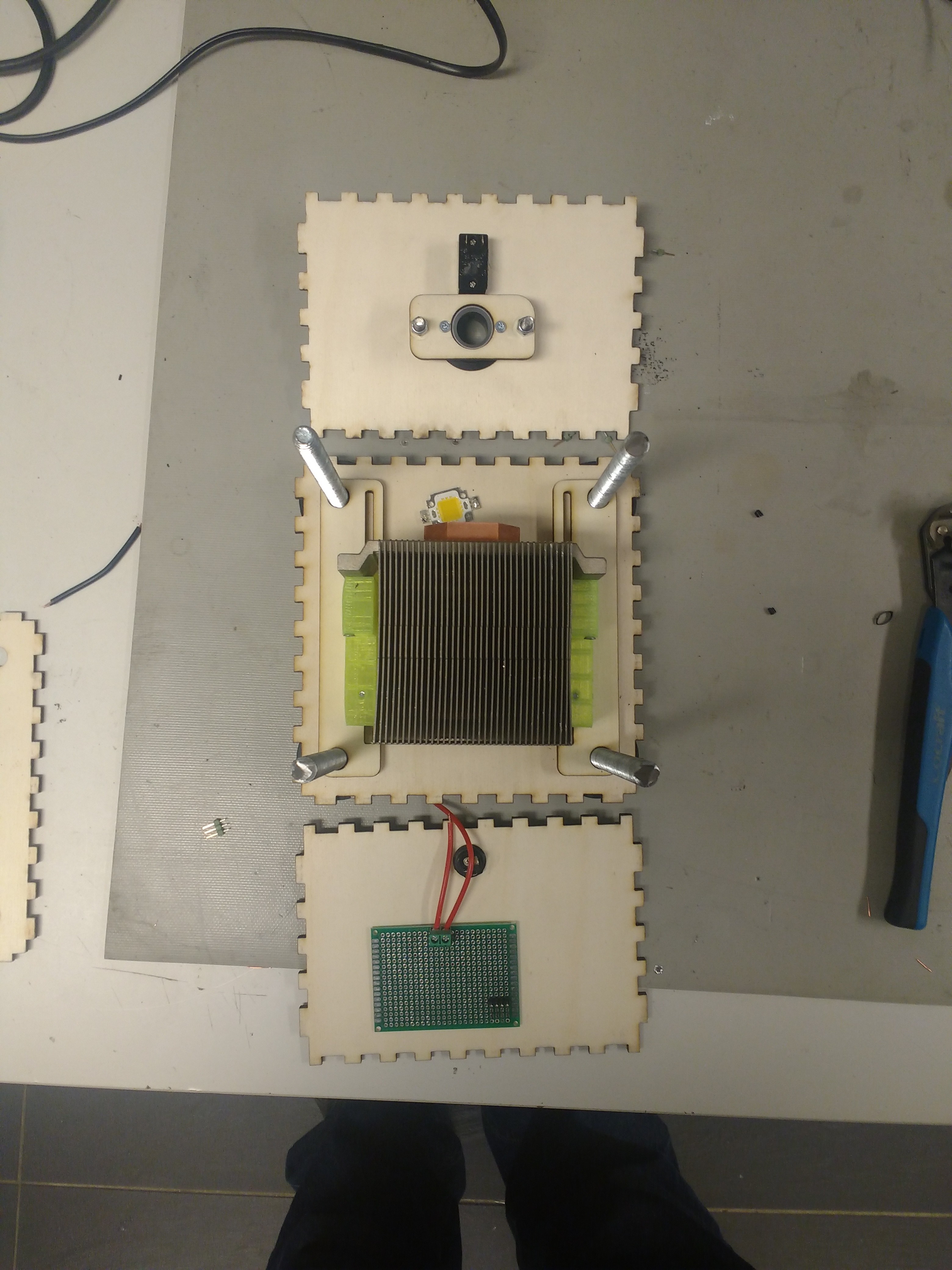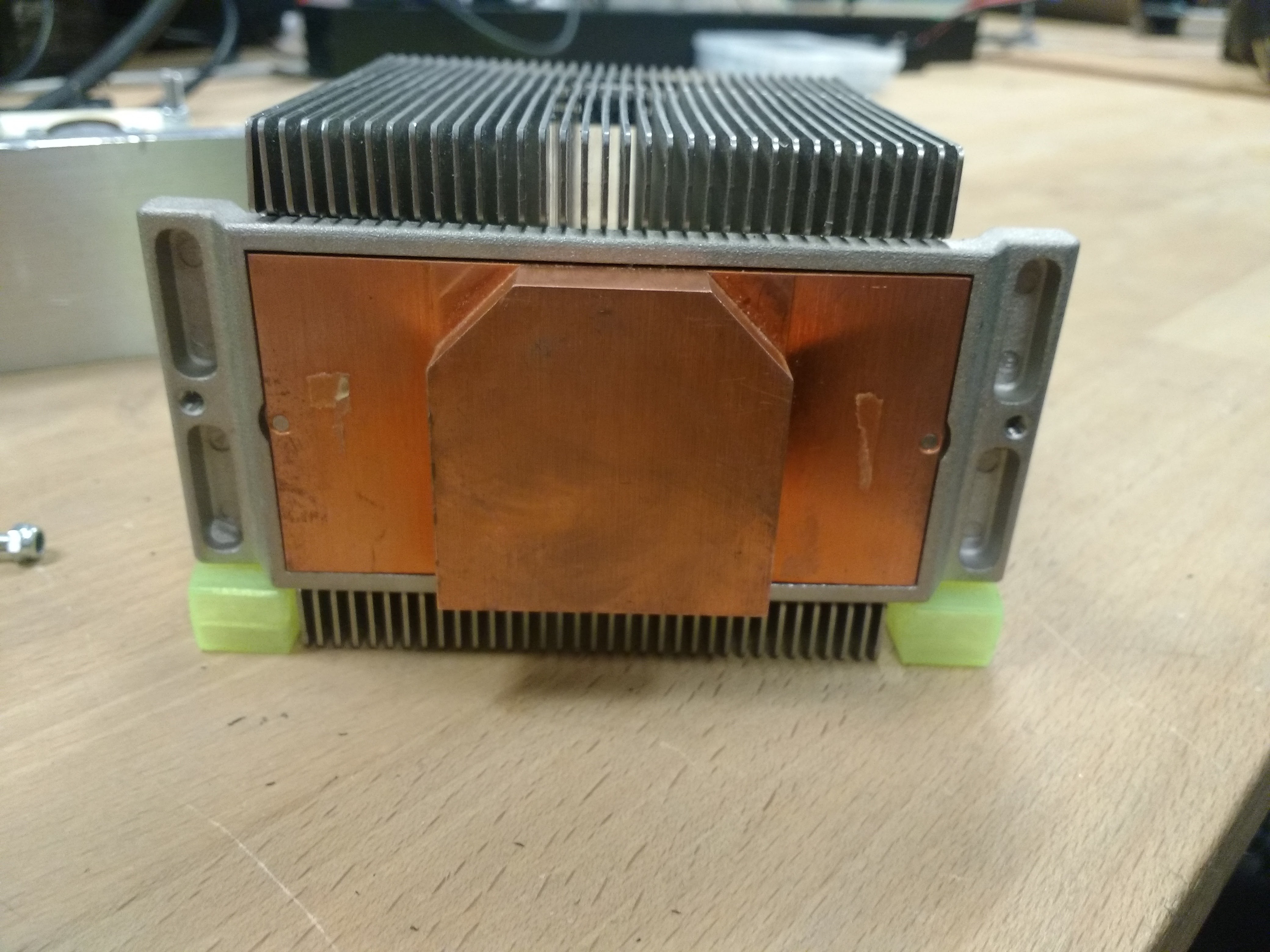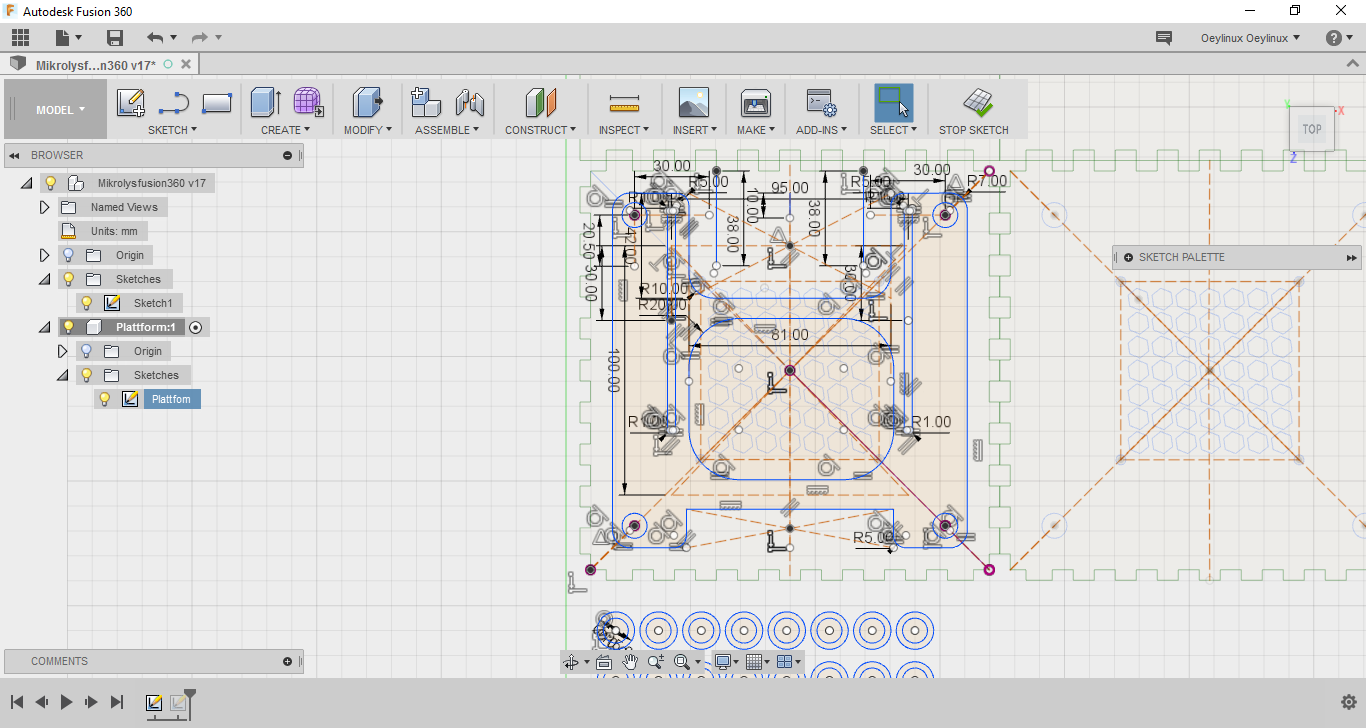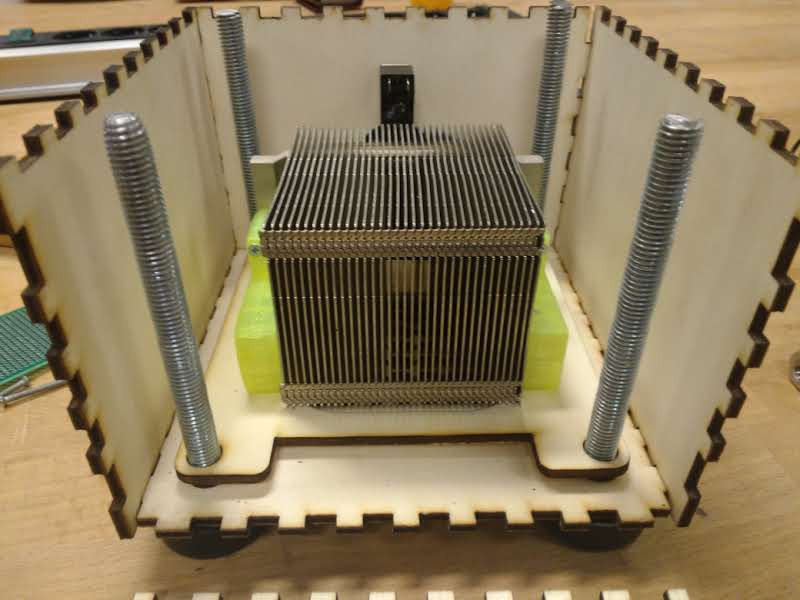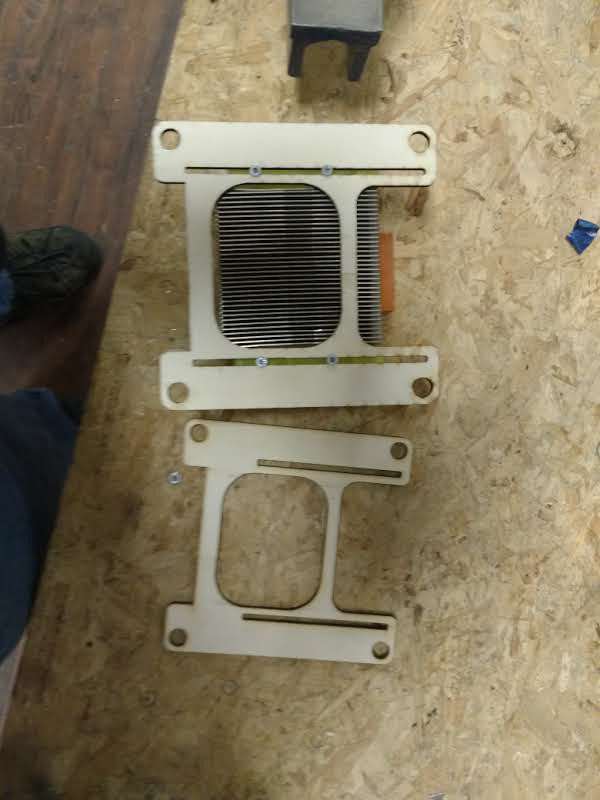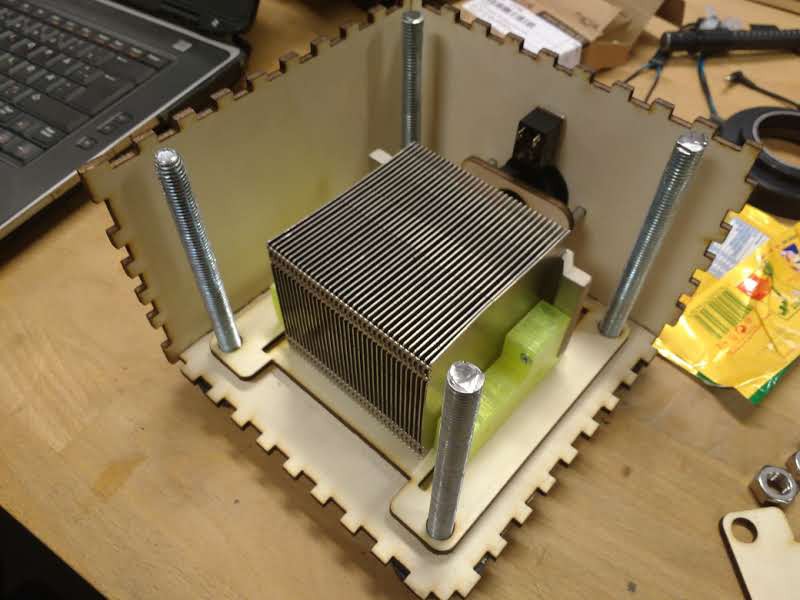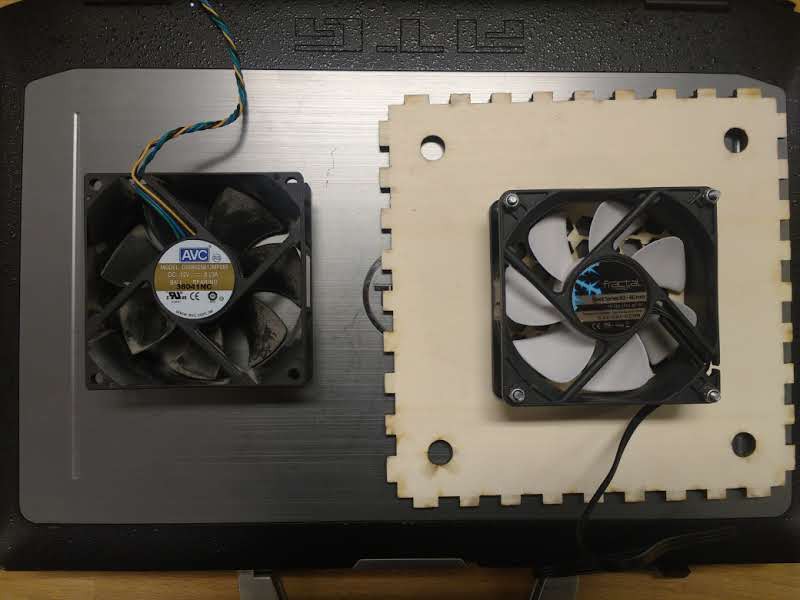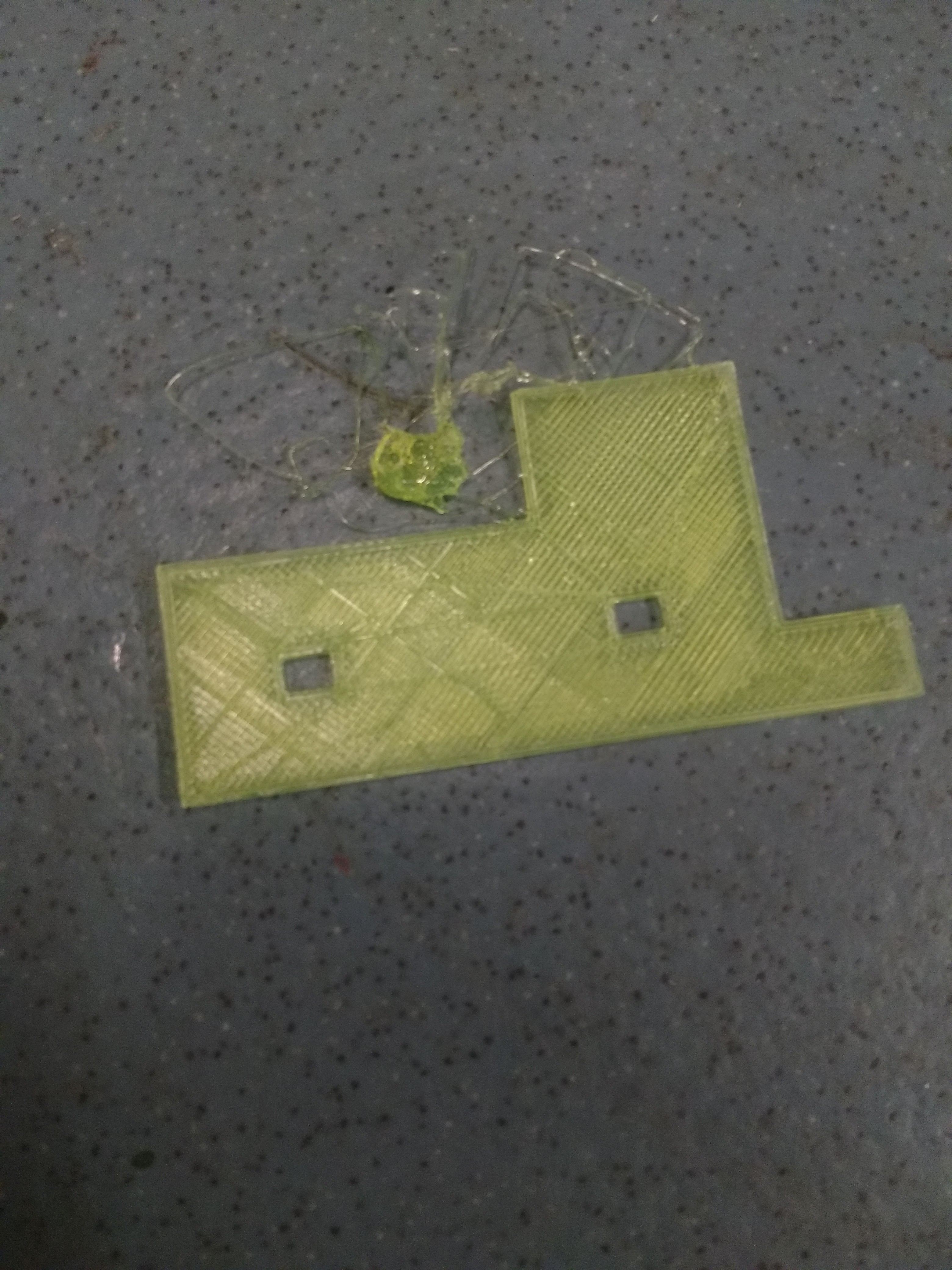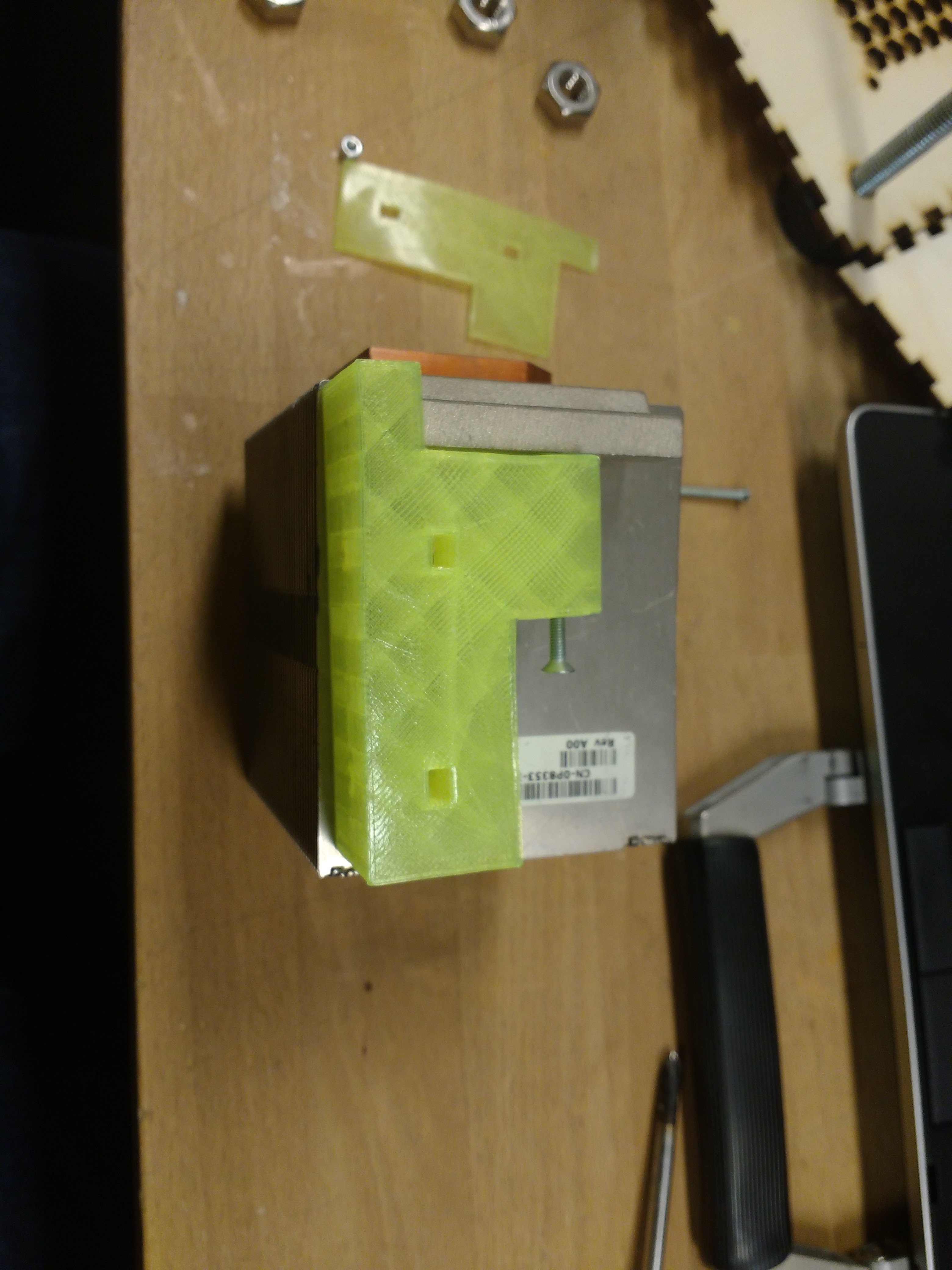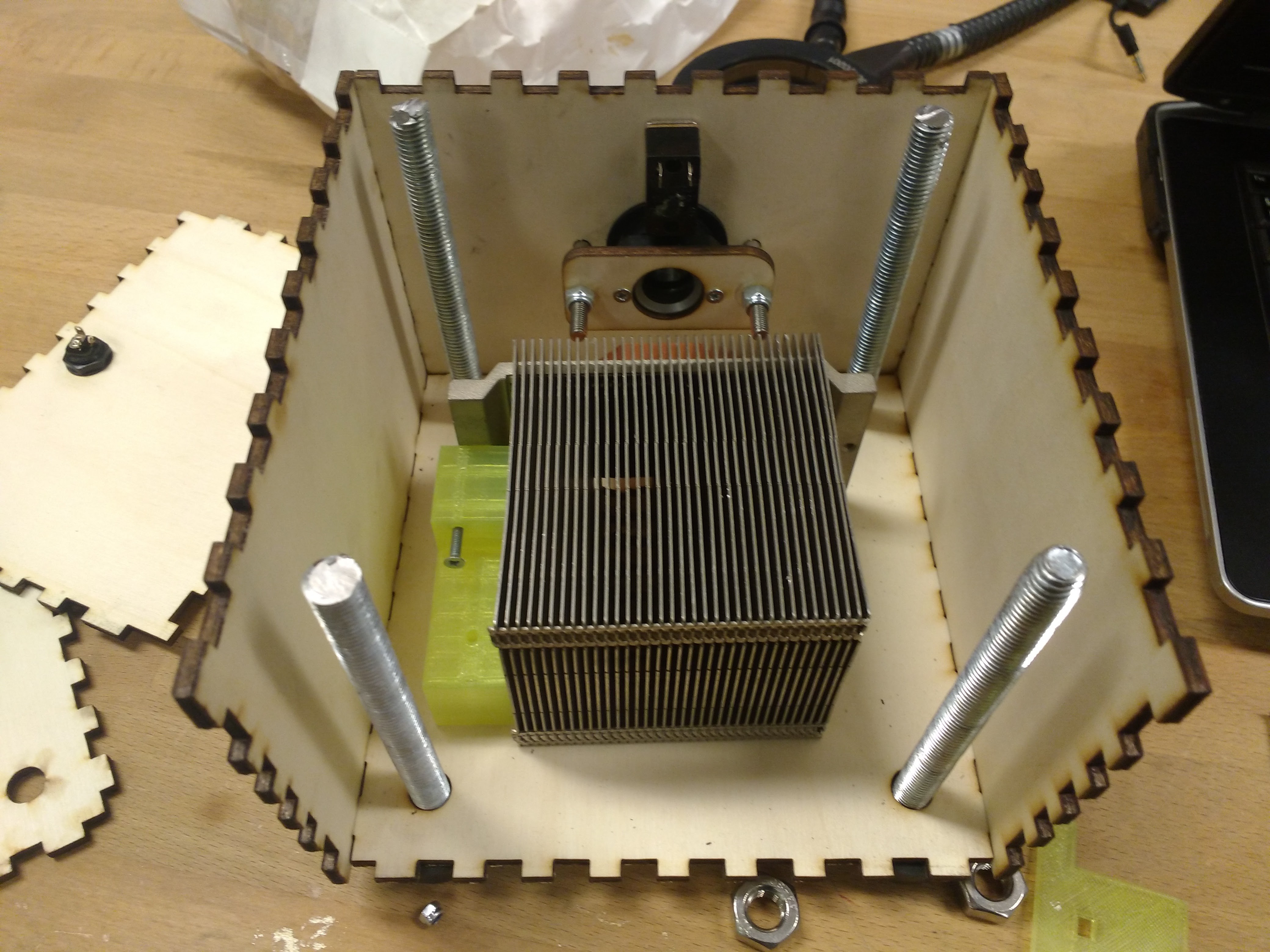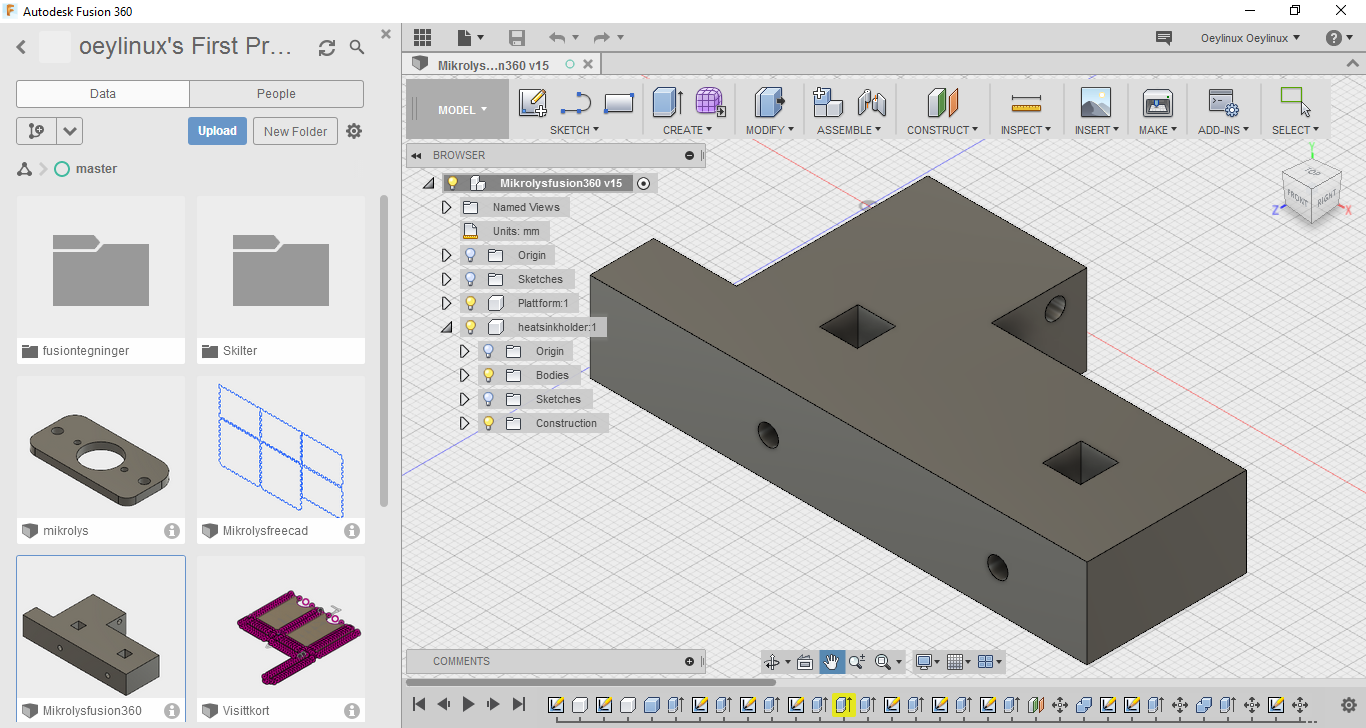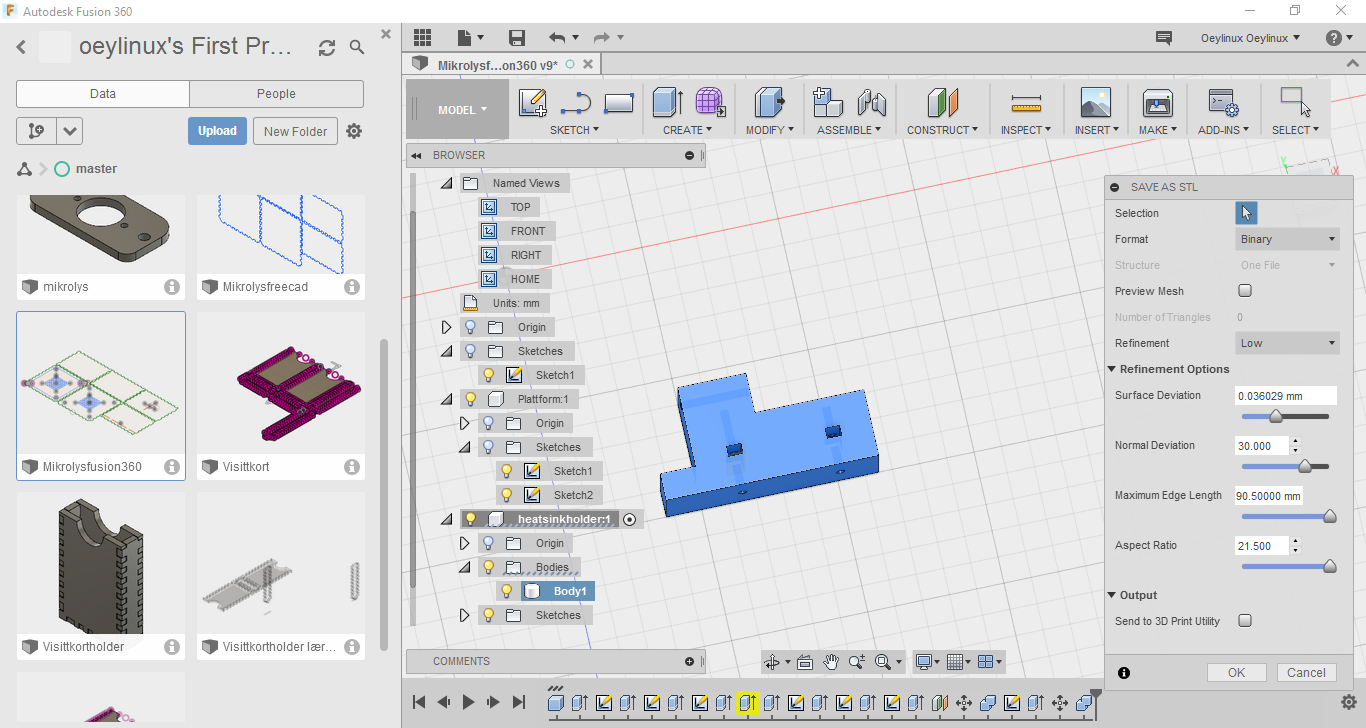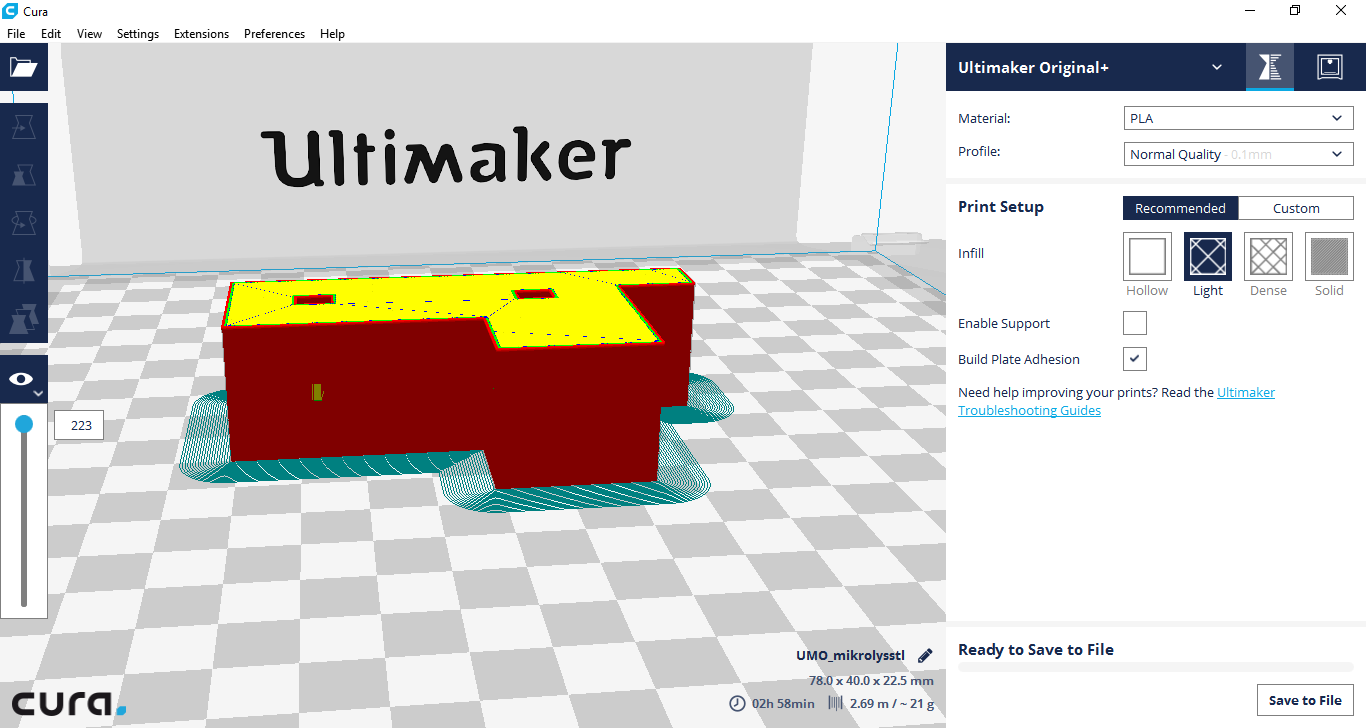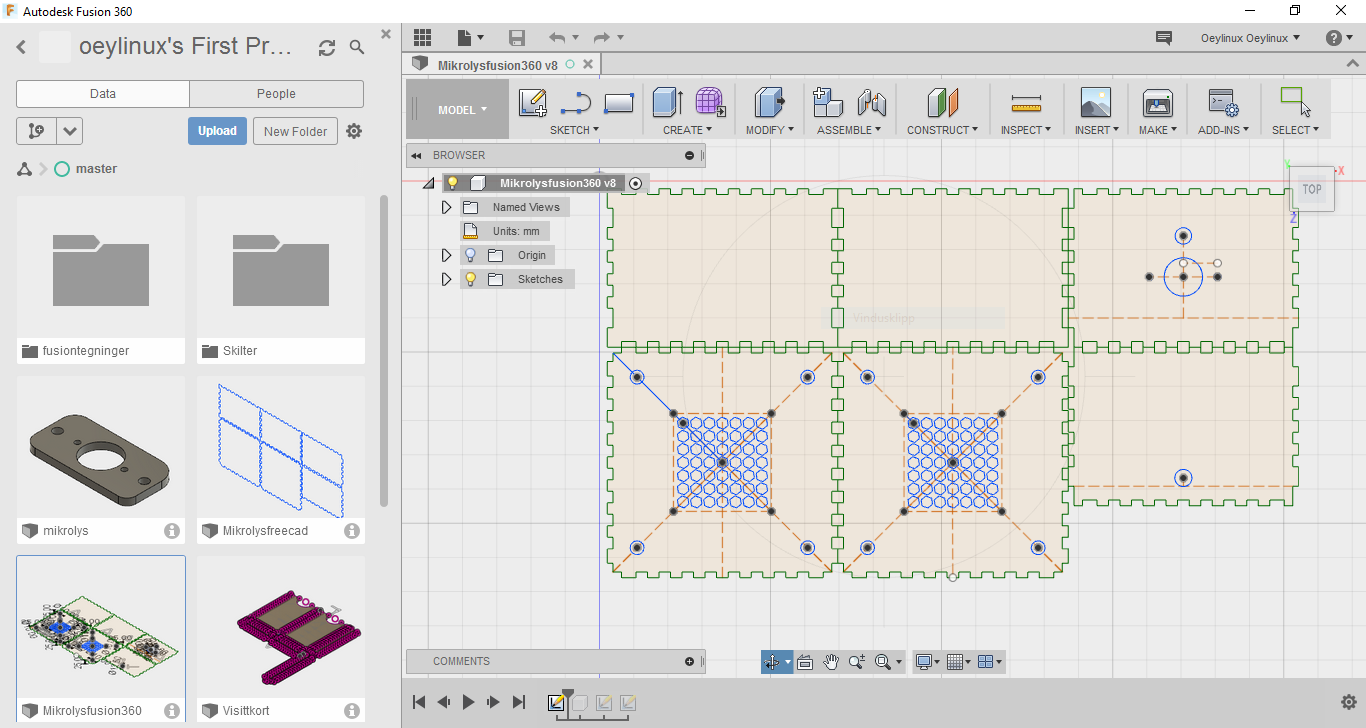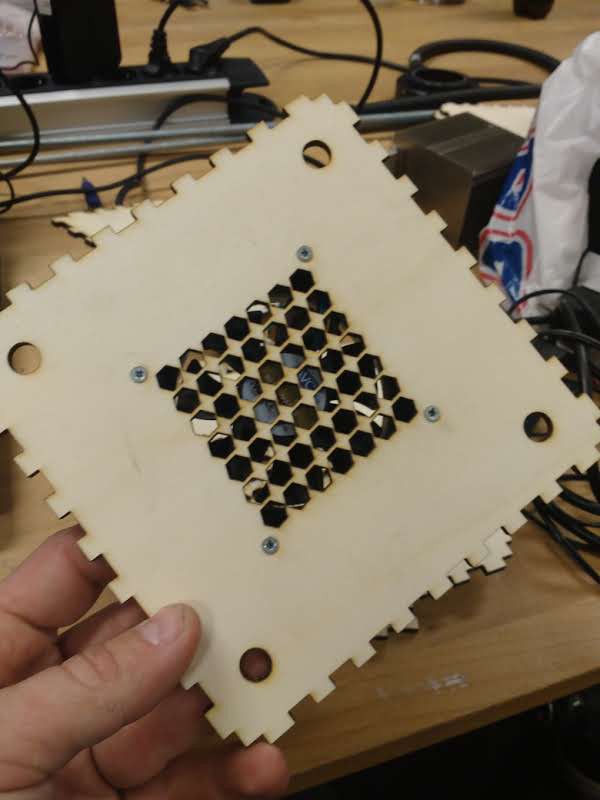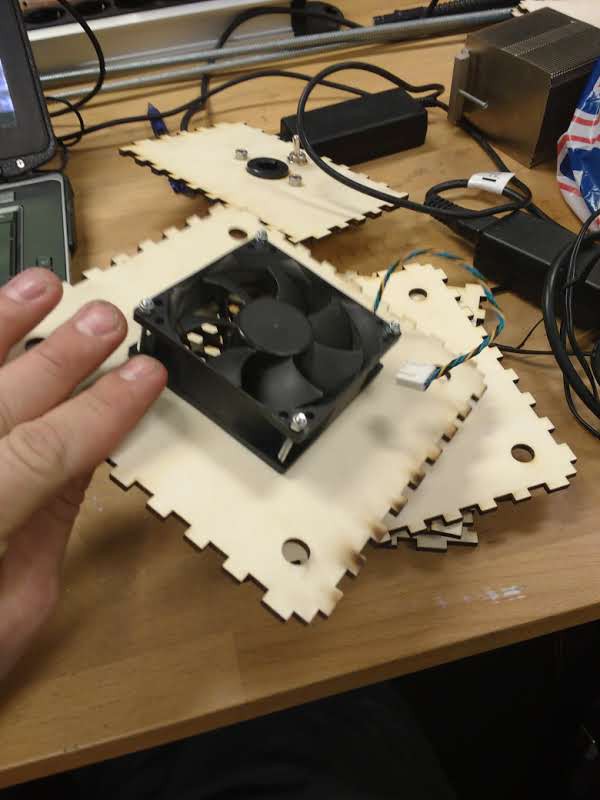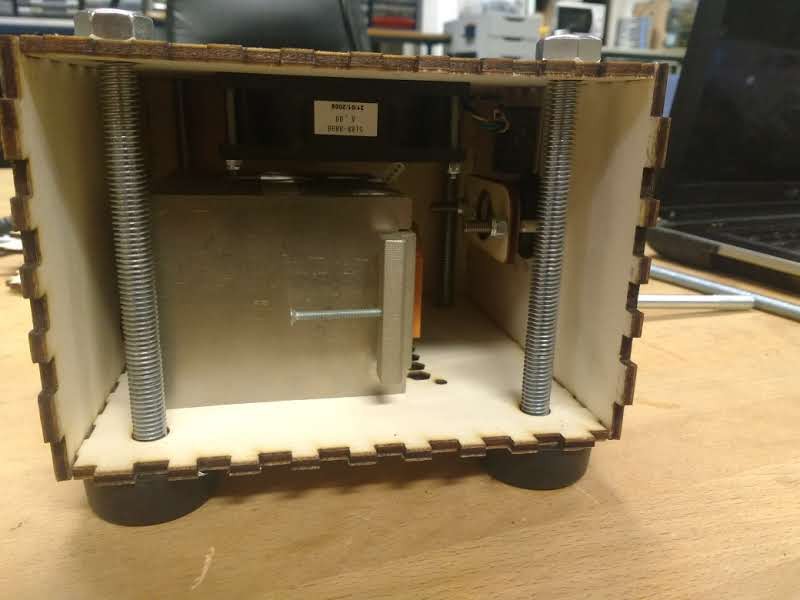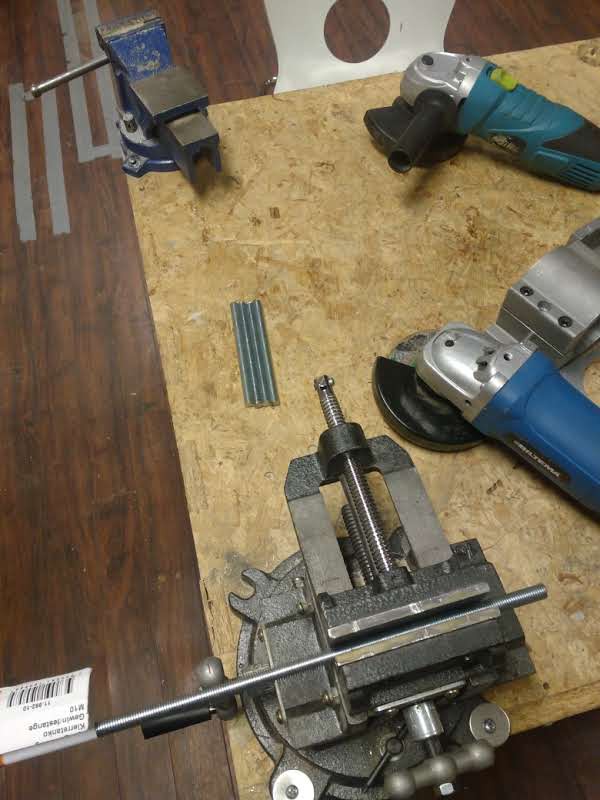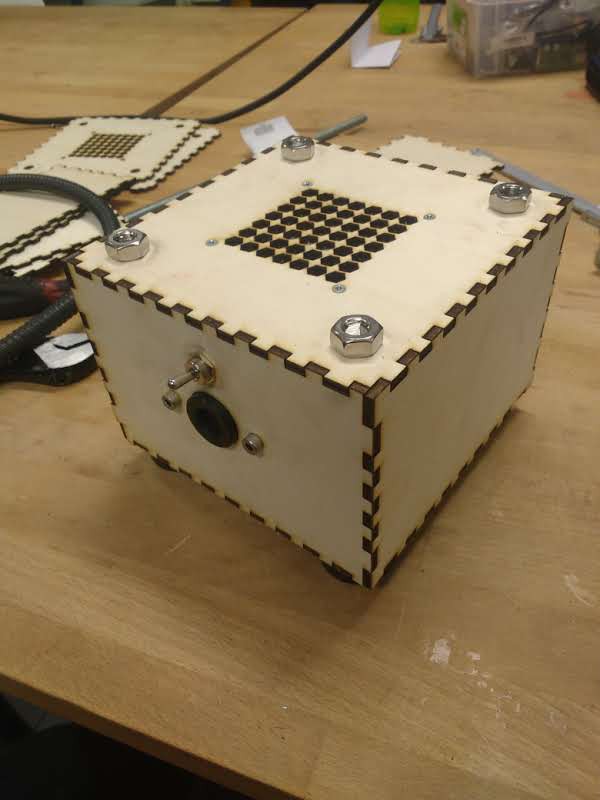-
Working prototype!
03/23/2017 at 22:38 • 0 commentsI have assembled all the electronics and the case. It is now a working protype! I started the day with soldering on wires to the led and crimping contacts. I then used some thermal adhesive to attach the led to the heatsink, after 10 minuttes of curing this was the result.
![]()
I then wired it quickly together to make sure everything was working
![]()
Lets test it!
![]()
![]()
Now I laser cut out a new backplate that had mounting holes for m2 screws. The m2 screws held the pcb in place. I then assembled it and tested it at the microscope. A temporary sucsess! Now, I will post it on slack that bitraf uses and hopefully recieve som feedback.
![]()
![]()
I know there are some things that I need to do with it.
- Upgrade the powersuply from 0.75 A to 1 ampere to make the led shine brighter (1A is its limmit)
- Fix the powercable (the cable is temporarily connected with a block connector
- Make a reflector of aluminium (so more of the light gets reflected in to the tube)
I am excited to hear what the feedback is going to be.
-
Protoboarding
03/22/2017 at 23:33 • 0 commentsSo I was a quick tour at bitraf today, I got to work on the proto board that is going to connect Fan and the LED to the powersupply. I Made shure I had all the connectors I needed an startet soldering and laiyng out the components.
![]()
A small start. Here is a layout so I can see how long my wires need to be. I wanted to make it really simple to disassemble and assemble.
![]()
-
Finnishing 3d print and platform
03/21/2017 at 18:59 • 0 commentsSo the 3d printing is finnsihed! It went quite well. The first print liftet up from the print bed a little bit. That made it bent but not a problem for the functionality of the print.
![]()
Attached to the heatsink it worked like I wanted it to.
![]()
Since I like to work with as few variables as possible so I decided to make the platform that would hold the heatsink after I printed the brackets. That way I could measure the distance between the holes with a caliper. I made a model fusion 360 to lasercut it.
I decided i could just as well make the washers between the base and the platform with the lasercutter so I put it in my model.
![]()
The platform is decided so that the heatsink/LED can slide back and forth if needed to adjust it for it optimal performance. The first cut couldnt go far enough back so I made a new one.
![]()
No it has been assembeled with the new platform.
![]()
I have made a prototype to connect the fan and the LED to. I tested the fan and it didnt seem tp work. My theory is that the fan I used is a PWM fan and that i refused to spin if it didnt have a a sqaure wave on pin 4 (blue wire). I bought a fractal design 80mm non pwm fan to replace it.
![]()
That means that most of my case is finished! I have the electronics, mounting the pcb and milling a reflector in aluminium left to finished the project.
-
More 3d printing work!
03/20/2017 at 00:17 • 0 commentsSo I started printing out the brackets for heatsink. The first one started spinning around on the print bed after some layers. After applying some glue from a gluestick that problem was solved.
![]()
Well, Nope. lets try again.
![]()
So her eis the whole peace. Many of the measurements was correct. Some of them was not. One measurement that was wrong was the distance from the screwhole on the bracket to the heatsink fins. the reason it was that the outer heatsink fin was bent when I measured it with the caliper. Here is a overview so you can si where it will be in the case. Note that the platform under the heatsink that the bracket is going to be connected to is not build.
![]()
So after some refinements I have a new model! I will print it tomorrow:
-
Modeling a bracket for 3d printing
03/17/2017 at 23:31 • 0 commentsSo I now started modeling the brackets that will hold the heatsink. They will be connected to the platform and made so they can adjusted to slide back or forth.
The rectangular holes is for the nuts to slide in to. that way i can securely connect to the bracket with screws without making the threads in 3d. Another plus is that I can use locknuts.
A minus is that one side takes three hours to print with minimum infill... oh well.
-
it´s CAD time!
03/17/2017 at 10:14 • 0 commentsI have only shown you the results of the CADing I have been doing for this project. So I thought I could tell you a little about how i made it. I used makercase.com to make the enclosure. I the imported it into fusion 360. And struggled for two hours to make the svg scale correctly. The solution I/Stian at bitraf found was to divide the certain length by what it was supposed to be in real life. The reason I coulnd´t measure the entire length was because makercase lays your case parts out in a pattern without specifying any measurements of how large the whole cut area is.
A cut the case out three times, One for a mockup, one with vent holes and holes for threaded rods and the last time to correct a mistake I did with placement of two of the holes for the threaded rods + lovering the input hole for the faceplate. Now I have to model a platform that the heatsink and LED will rest on and a 3d printed bracket to hold the heatsink. Wish me luck!
-
Case design and improvments
03/16/2017 at 22:31 • 0 commentsI have now designed the case with honeycomb grid for ventilation. The case is now nearing completion!
![]()
80mm Fan is now mounted with m3 screws and locknuts
![]()
The case is now held together with four m10 threaded rods:
![]()
The heatsink (and the led not shown in the picture) will be on a platform suspended on the m10 threaded rods.
![]()
The ehm.. "precise" way of making threaded rods for the box.
![]()
This is essentialy how it will look from the outside! The feat is designed to let the airintake at the bottom let in air. I found out that even with no glue, the box is held quite strongly together by the threaded rods.
Lightsource for a microscope ringlight
A project with the mission to replace an old lightsource for a microscope ringlight from leica.
 Øystein
Øystein